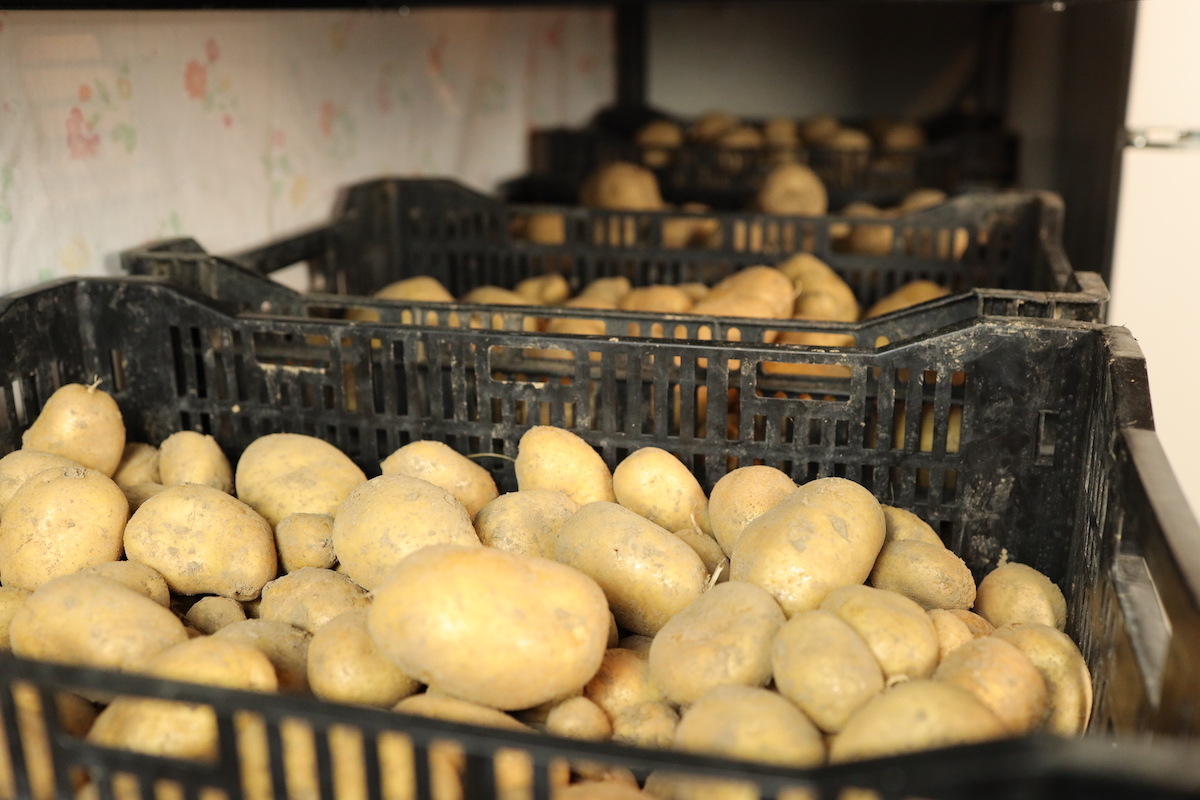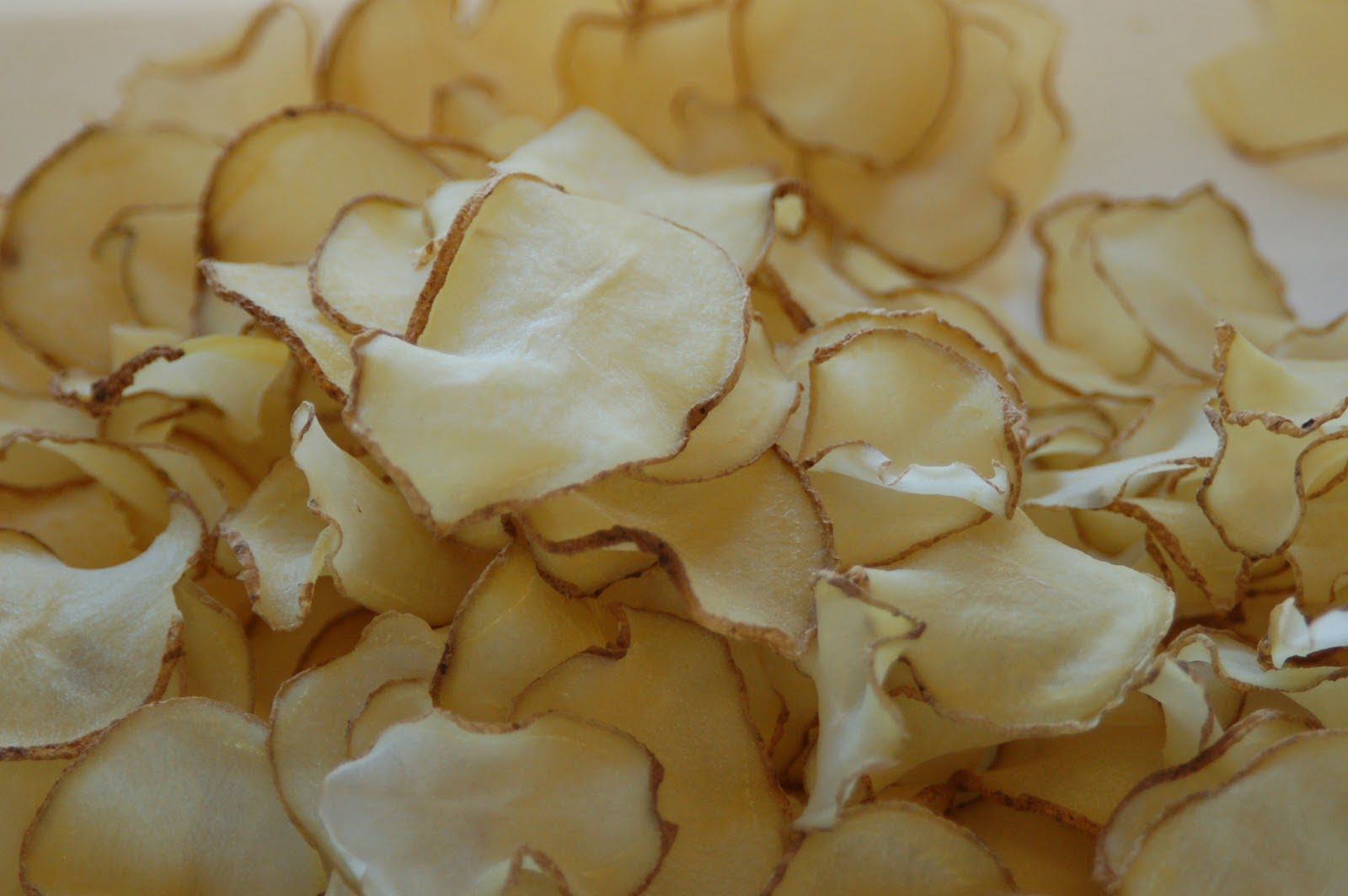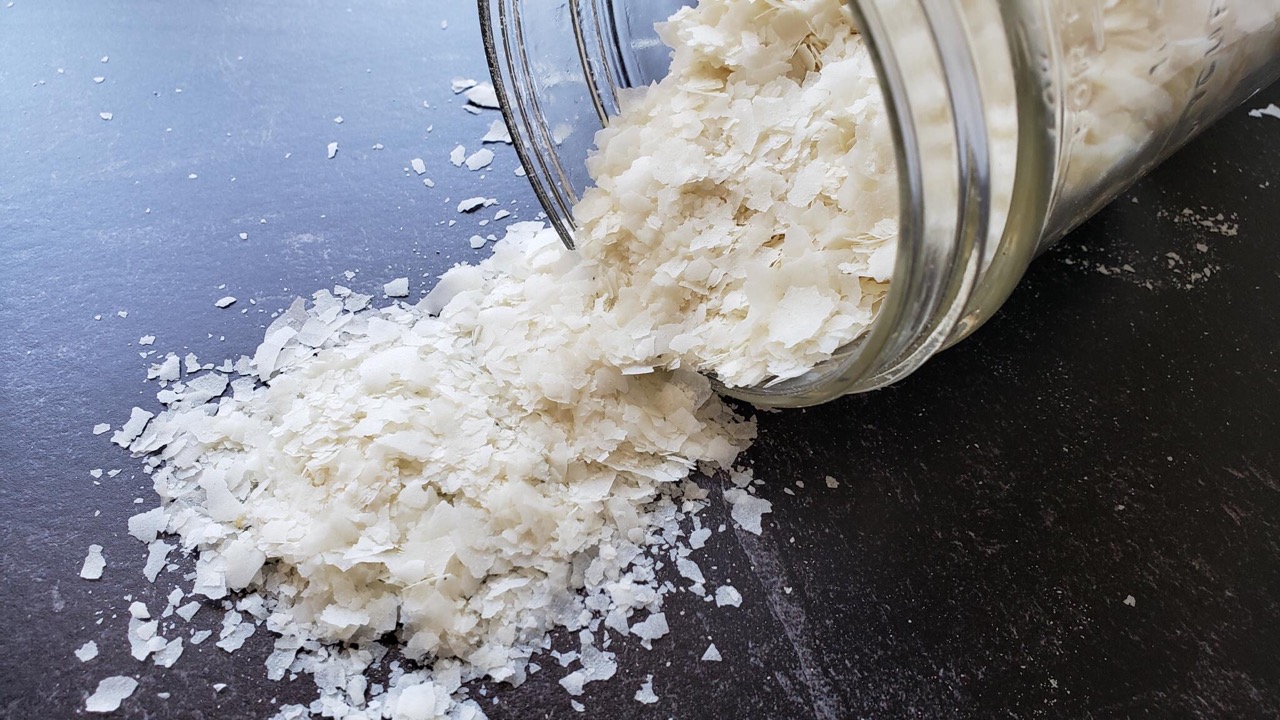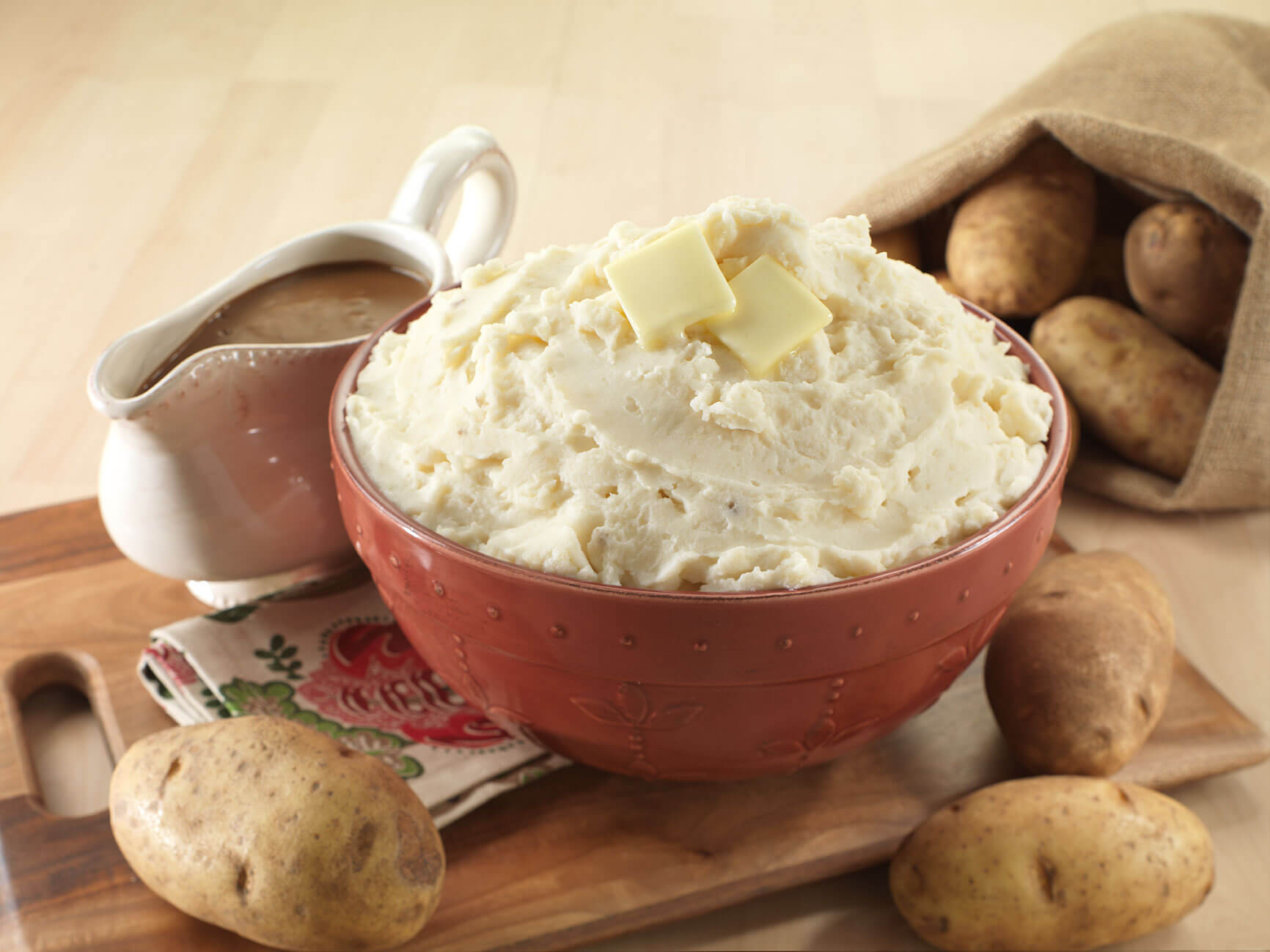

Articles
How To Store Russet Potatoes Long Term
Modified: January 6, 2024
Learn how to store russet potatoes for the long term with our helpful articles. Find tips and tricks for keeping your potatoes fresh and delicious.
(Many of the links in this article redirect to a specific reviewed product. Your purchase of these products through affiliate links helps to generate commission for Storables.com, at no extra cost. Learn more)
Introduction
When it comes to storing russet potatoes for the long term, proper handling and storage conditions are essential. Russet potatoes are a popular variety known for their fluffy texture and versatility in the kitchen. However, they can be prone to spoilage if not stored correctly.
In this article, we will guide you through the best practices for storing russet potatoes to ensure their freshness and quality over an extended period of time. Whether you have a root cellar, basement, garage, shed, refrigerator, or freezer, we will cover various storage methods suitable for different environments.
By following these guidelines, you can stock up on russet potatoes during their peak season or take advantage of bulk purchases without worrying about them going to waste. So, let’s dive in and discover how to store russet potatoes for the long term!
Key Takeaways:
- Choose high-quality, firm, and blemish-free russet potatoes for long-term storage. Properly prepare and store them in cool, dark, and well-ventilated conditions to ensure their longevity and minimize waste.
- Explore various storage options such as root cellars, basements, or freezers to preserve russet potatoes. Regularly monitor and inspect stored potatoes for signs of decay, and get creative with recipes to enjoy their delicious versatility year-round.
Read more: How To Store Russet Potatoes
Choosing Russet Potatoes for Long-Term Storage
The first step in storing russet potatoes for the long term is selecting the right potatoes. It is important to choose potatoes that are in good condition and free from any damage or disease. Here are some tips for choosing russet potatoes for long-term storage:
- Look for firmness: Select potatoes that are firm to the touch. Avoid potatoes that feel soft or have mushy spots. Firm potatoes are less likely to spoil during storage.
- Inspect for blemishes: Examine the skin of the potatoes and avoid ones with cuts, bruises, or blemishes. Damaged potatoes are more likely to rot or develop diseases during storage.
- Avoid green potatoes: Green spots on potatoes indicate the presence of a toxic compound called solanine. To minimize health risks, avoid potatoes with green patches or sprouts.
- Choose medium-sized potatoes: Select russet potatoes that are medium-sized rather than excessively large or small. Medium-sized potatoes tend to store better and have a more uniform texture.
- Opt for organic potatoes: If possible, choose organic russet potatoes. These potatoes are grown without the use of synthetic pesticides, which can affect their storage life and quality.
By following these guidelines, you can ensure that you start with high-quality russet potatoes that are less prone to spoilage. Remember, the quality of the potatoes you choose will significantly impact their storage life, so take the time to select the best ones available.
Preparing Russet Potatoes for Storage
Before storing russet potatoes for the long term, it’s crucial to properly prepare them. Preparing the potatoes helps remove any dirt, excess moisture, and potential contaminants, which can extend their storage life and prevent the growth of mold or bacteria. Follow these steps to prepare russet potatoes for storage:
- Clean the potatoes: Start by gently scrubbing the potatoes under running water to remove any dirt or debris. Avoid using soap or harsh chemicals as they can leave residues that affect the potato’s taste and quality.
- Remove excess moisture: After cleaning, pat the potatoes dry with a clean towel to remove any excess moisture. Excess moisture can promote rotting and spoilage during storage.
- Inspect for damage: Take a closer look at each potato to identify any cuts, bruises, or soft spots. Remove any damaged potatoes from the batch as they can accelerate spoilage.
- Cure the potatoes: Curing involves exposing the potatoes to slightly warmer temperatures (around 50-60°F or 10-15°C) and high humidity for a period of about two weeks. This process allows the potato skins to toughen and heal, extending their shelf life.
- Store in a well-ventilated container: Once the potatoes have been cured, transfer them to a storage container that provides good airflow. Avoid storing them in plastic bags or airtight containers, as this can trap moisture and lead to rotting. Opt for a breathable storage bag or a wooden crate instead.
By following these preparation steps, you can ensure that your russet potatoes are clean, dry, and ready for long-term storage. Taking the time to prepare them properly will help maintain their freshness and quality over an extended period.
Best Storage Conditions for Russet Potatoes
The storage conditions play a crucial role in determining how long russet potatoes can be stored while maintaining their quality. Here are the key factors to consider when it comes to storing russet potatoes:
- Temperature: Russet potatoes prefer cool temperatures for storage. The ideal range is around 45-50°F (7-10°C). Avoid storing them in temperatures below 40°F (4°C) or above 50°F (10°C) as it can affect their texture and flavor.
- Humidity: Maintaining the right humidity level is crucial to prevent the potatoes from drying out or becoming too moist. Aim for a relative humidity of around 90-95%. If the humidity is too low, the potatoes may shrivel, and if it’s too high, they may sprout or develop rot.
- Light: Russet potatoes should be stored in a dark environment. Exposure to light can cause them to turn green and produce solanine, a toxic compound. Keeping them in the dark helps preserve their flavor and nutritional value.
- Airflow: Adequate airflow is essential to prevent the build-up of moisture and the growth of mold. Make sure the storage area allows for proper ventilation to keep the potatoes fresh.
Considering these factors, it’s important to identify the most suitable storage location in your home or pantry. Let’s explore some common storage options for russet potatoes.
Storing Russet Potatoes in a Root Cellar
A root cellar is an excellent storage option for russet potatoes as it provides the ideal conditions of cool temperature, high humidity, and darkness. If you have a root cellar or a cool basement, follow these steps to store your russet potatoes:
- Prepare the area: Ensure that the root cellar or basement is clean, free from pests, and well-ventilated. Remove any potential sources of moisture or excessive humidity.
- Create storage bins: Use wooden crates or mesh baskets to store the potatoes. These containers provide good airflow and allow for visibility and easy access.
- Sort and arrange: Sort the potatoes, discarding any damaged or spoiled ones. Arrange them in a single layer within the storage bins, making sure they are not touching each other.
- Monitor the conditions: Regularly check the temperature and humidity levels in the root cellar or basement. Make adjustments if necessary to maintain the desired conditions.
- Inspect for spoilage: Periodically inspect the potatoes for any signs of spoilage or sprouting. Remove any affected potatoes immediately to prevent the spread of decay.
Storing russet potatoes in a root cellar can provide a long shelf life of several months. Remember to monitor the conditions regularly to ensure the potatoes stay fresh and maintain their quality throughout the storage period.
Read more: How To Store Instant Potatoes Long Term
Storing Russet Potatoes in a Basement
If you don’t have a root cellar, storing russet potatoes in a basement can be a viable alternative. Basements generally offer a cooler and darker environment, making them suitable for potato storage. Here are the steps to store russet potatoes in a basement:
- Choose the right location: Select a corner or area in the basement that maintains a stable temperature between 45-50°F (7-10°C). Avoid areas near heating vents or windows, as they may have temperature fluctuations.
- Prepare storage containers: Use breathable storage bags, wooden crates, or mesh baskets to store the potatoes. These containers provide ventilation and prevent moisture build-up.
- Arrange the potatoes: Sort the potatoes, removing any damaged or rotten ones. Place them in a single layer in the storage containers, making sure they have enough space for airflow.
- Monitor humidity levels: Keep an eye on the humidity levels in the basement. If the air is too dry, you can place a shallow dish of water near the potatoes to increase humidity. If it’s too humid, consider using a dehumidifier to maintain an optimal environment.
- Check for sprouting or spoilage: Regularly inspect the potatoes for any signs of sprouting or decay. Remove any affected potatoes promptly to prevent the spread of spoilage.
Storing russet potatoes in a basement can provide a storage life of several months, allowing you to enjoy these delicious tubers for an extended period. Just ensure that the basement provides the right temperature and humidity levels, and regularly monitor the conditions to maintain the quality of the potatoes.
Store russet potatoes in a cool, dark place with good ventilation, such as a cellar or pantry. Keep them away from onions, as they can cause each other to spoil faster. Check for any sprouting or soft spots regularly and remove any bad potatoes to prevent them from spoiling the rest.
Storing Russet Potatoes in a Garage or Shed
If you don’t have access to a root cellar or basement, storing russet potatoes in a garage or shed can be a viable option. However, it’s important to note that the temperature and conditions in these spaces can vary more than in a root cellar or basement. Here’s how you can store russet potatoes in a garage or shed:
- Select an appropriate location: Choose a cool area within the garage or shed that remains relatively stable in temperature. Avoid areas that experience extreme temperature fluctuations or direct sunlight.
- Prepare proper storage containers: Use breathable storage bags or mesh baskets to store the potatoes. These containers allow for better airflow and ventilation, preventing moisture build-up.
- Arrange the potatoes: Sort the potatoes, discarding any damaged or spoiled ones. Place them in a single layer in the storage containers, ensuring there is enough space between each potato for proper air circulation.
- Monitor the temperature: Regularly check the temperature in the garage or shed to ensure it stays within the recommended range of 45-50°F (7-10°C). Make adjustments if needed to maintain a consistent temperature.
- Inspect for sprouting and decay: Periodically inspect the potatoes for any signs of sprouting or decay. Remove any affected potatoes immediately to prevent spoilage from spreading to the others.
Storing russet potatoes in a garage or shed can work well as long as you carefully monitor the temperature and conditions. Keep in mind that the storage life may be slightly shorter compared to a root cellar or basement due to potential temperature fluctuations. However, with proper care and attention, you can still enjoy fresh russet potatoes for a considerable period.
Storing Russet Potatoes in a Refrigerator
While refrigeration is not typically recommended for storing russet potatoes, it can still be an option if you have limited storage space or need to store them for a short period. However, it’s important to note that storing potatoes in the refrigerator can affect their texture and flavor. Here are some guidelines for storing russet potatoes in a refrigerator:
- Clean and dry: Before refrigerating, make sure to clean the potatoes thoroughly and pat them dry to remove any excess moisture.
- Wrap in paper towels: Individually wrap each potato in a paper towel to help absorb moisture and maintain their dryness. This prevents them from becoming too damp in the refrigerator.
- Place in a perforated bag: Store the wrapped potatoes in a perforated plastic bag or a plastic storage container with ventilation holes. This helps maintain airflow and prevents condensation from building up.
- Keep separate from other produce: Store potatoes separately from other fruits and vegetables in the refrigerator. Potatoes release a natural gas called ethylene, which can accelerate the ripening and spoilage of other produce.
- Monitor for sprouting and decay: Regularly check the potatoes for any signs of sprouting or decay. Remove any affected potatoes promptly to prevent the spread of spoilage.
It’s worth noting that storing russet potatoes in the refrigerator can lead to a change in texture, making them slightly sweeter and mealy. Therefore, it’s recommended to use refrigerated potatoes within a few weeks rather than for long-term storage.
While refrigeration can be a temporary storage solution, it’s best to explore other options such as a root cellar, basement, or cool storage area for maintaining the best quality and flavor of russet potatoes over a more extended period.
Storing Russet Potatoes in a Freezer
Freezing russet potatoes is an excellent way to preserve them for an extended period. However, it’s important to note that freezing can affect the texture of russet potatoes, making them softer and more suitable for mashed potatoes, soups, or casseroles. Here’s how you can store russet potatoes in the freezer:
- Prepare the potatoes: Wash, peel, and cut the potatoes into small pieces or slices, as desired. Blanching is not necessary, but you can blanch them for a couple of minutes if you prefer.
- Blot moisture: Pat the potato pieces dry with a clean towel to remove excess moisture. This helps prevent freezer burn and ice crystals from forming.
- Flash freeze: Arrange the potato pieces in a single layer on a baking sheet or tray. Place the tray in the freezer and let the potato pieces freeze for a few hours until they are solid.
- Package for long-term storage: Once the potato pieces are frozen, transfer them into freezer-safe bags or airtight containers. Squeeze out any excess air and seal them tightly to prevent freezer burn.
- Label and date: Label the bags or containers with the type of potatoes and the date of freezing. This helps you keep track of their freshness and ensures you use the oldest potatoes first.
- Store in the freezer: Place the packaged potatoes in the freezer and make sure they are stored in a stable and well-organized manner.
When you’re ready to use the frozen russet potatoes, simply thaw them in the refrigerator overnight or cook them directly from frozen in recipes that call for cooked potatoes.
Freezing russet potatoes is a convenient option for long-term storage, but it’s important to keep in mind that the texture may change. It’s best to use the frozen potatoes within a few months for optimal quality and taste.
Whether you choose to freeze the potatoes for future use or explore other storage methods, russet potatoes can be enjoyed year-round when stored properly.
Read more: How To Store Sweet Potatoes Long Term
Monitoring and Inspecting Stored Russet Potatoes
Proper monitoring and inspection are crucial to ensure the stored russet potatoes remain in good condition and free from spoilage. Regular checks allow you to identify any issues early on and prevent the spread of decay. Here are some guidelines for monitoring and inspecting stored russet potatoes:
- Check regularly: Set a schedule to inspect the potatoes periodically throughout their storage period. This could be once a week or every few weeks, depending on the quantity and length of storage.
- Look for signs of decay: Examine the potatoes for any signs of rot, mold, or soft spots. Pay particular attention to areas where potatoes are in contact with one another, as those spots are more prone to decay.
- Remove any spoiled potatoes: If you find any potatoes that are starting to decay, remove them immediately to prevent the spread of spoilage to other potatoes.
- Check for sprouting: Keep an eye out for sprouts or green patches on the potatoes. If any potatoes begin sprouting, it’s a sign that they are no longer suitable for long-term storage and should be used soon.
- Monitor temperature and humidity: Regularly check the storage conditions, including temperature and humidity levels. Make adjustments if necessary to maintain the optimal storage environment.
- Rotate the potatoes: If you are storing potatoes in multiple containers or layers, periodically rotate them to ensure each potato gets equal airflow and exposure.
- Take note of storage duration: Keep track of how long the potatoes have been in storage. Use the oldest potatoes first to prevent them from staying in storage for too long.
By consistently monitoring and inspecting the stored russet potatoes, you can catch any issues early on and ensure the overall quality and freshness of the remaining potatoes.
Remember, proper storage conditions and regular maintenance are key to preserving the russet potatoes for as long as possible. With a vigilant eye and proactive approach, you can enjoy delicious russet potatoes for an extended period without sacrificing taste or quality.
Using Stored Russet Potatoes
After taking the time and effort to store russet potatoes for the long term, it’s essential to make the most of them in your culinary endeavors. Russet potatoes are versatile and can be used in a wide range of recipes. Here are some ways to utilize your stored russet potatoes:
- Baked Potatoes: Russet potatoes are perfect for making classic baked potatoes. Simply scrub the potatoes, pierce them with a fork, and bake until tender. Serve with your favorite toppings like butter, sour cream, and chives.
- Mashed Potatoes: Whip up creamy mashed potatoes by boiling peeled russet potatoes until tender, then mashing them with butter, milk, and seasonings. They make a delicious side dish for roasted meats and vegetables.
- Roasted Potatoes: Cut the potatoes into chunks, toss them with olive oil and seasoning, and roast them until golden and crispy. Roasted russet potatoes are a flavorful accompaniment to any meal.
- Potato Soup: Make a comforting potato soup by simmering diced russet potatoes with onions, garlic, broth, and cream. Customize it with your favorite toppings like bacon bits, cheese, or green onions.
- Potato Salad: Use boiled and cooled russet potatoes to create a delicious potato salad. Add in mayonnaise, mustard, pickles, and herbs for a refreshing and satisfying side dish.
- Hash Browns: Grate the potatoes and squeeze out any excess moisture, then cook them in a skillet with butter or oil until crispy. Season with salt and pepper for a tasty breakfast or brunch treat.
- Potato Casseroles: Layer sliced russet potatoes in a casserole dish with cheese, cream, and other ingredients of your choice. Bake until golden and bubbly for a comforting and indulgent dish.
These are just a few ideas to get you started, but the possibilities with russet potatoes are endless. From breakfast dishes to main courses and side dishes, they can add a hearty and delicious element to your meals.
Remember to thaw any frozen potatoes before using them in recipes. In addition, keep in mind that the texture of frozen potatoes may be softer, making them more suitable for mashed or pureed dishes.
Enjoy the satisfaction of using your stored russet potatoes in various culinary creations, and savor their flavor and versatility in your favorite dishes.
Conclusion
Proper storage of russet potatoes is essential to preserve their freshness, taste, and quality for an extended period. By following the guidelines outlined in this article, you can ensure the longevity of russet potatoes and minimize waste. Here’s a recap of the key points:
1. Choose high-quality potatoes: Select firm, blemish-free, and medium-sized russet potatoes for long-term storage.
2. Prepare the potatoes: Clean, dry, and cure the potatoes to help them withstand storage conditions better.
3. Consider the best storage conditions: Aim for a cool temperature, high humidity (90-95%), darkness, and adequate airflow.
4. Explore storage options: A root cellar, basement, garage, shed, refrigerator, or freezer can all be suitable depending on your available space.
5. Monitor and inspect: Regularly check the stored potatoes for any signs of decay, sprouting, or spoilage. Remove any affected potatoes promptly.
6. Get creative with your recipes: Utilize your stored russet potatoes in various culinary creations, such as baked potatoes, mashed potatoes, roasted potatoes, soups, salads, and more.
Remember, while russet potatoes have a good storage life, it’s important to keep an eye on them and use the older potatoes first. Additionally, freezing can affect their texture, so consider the best method based on your culinary needs.
By implementing these storage techniques and using the stored russet potatoes strategically in your cooking, you can enjoy their deliciousness and versatility throughout the year. So, stock up on russet potatoes during their prime season and savor their taste and convenience for many months to come!
Frequently Asked Questions about How To Store Russet Potatoes Long Term
Was this page helpful?
At Storables.com, we guarantee accurate and reliable information. Our content, validated by Expert Board Contributors, is crafted following stringent Editorial Policies. We're committed to providing you with well-researched, expert-backed insights for all your informational needs.














0 thoughts on “How To Store Russet Potatoes Long Term”